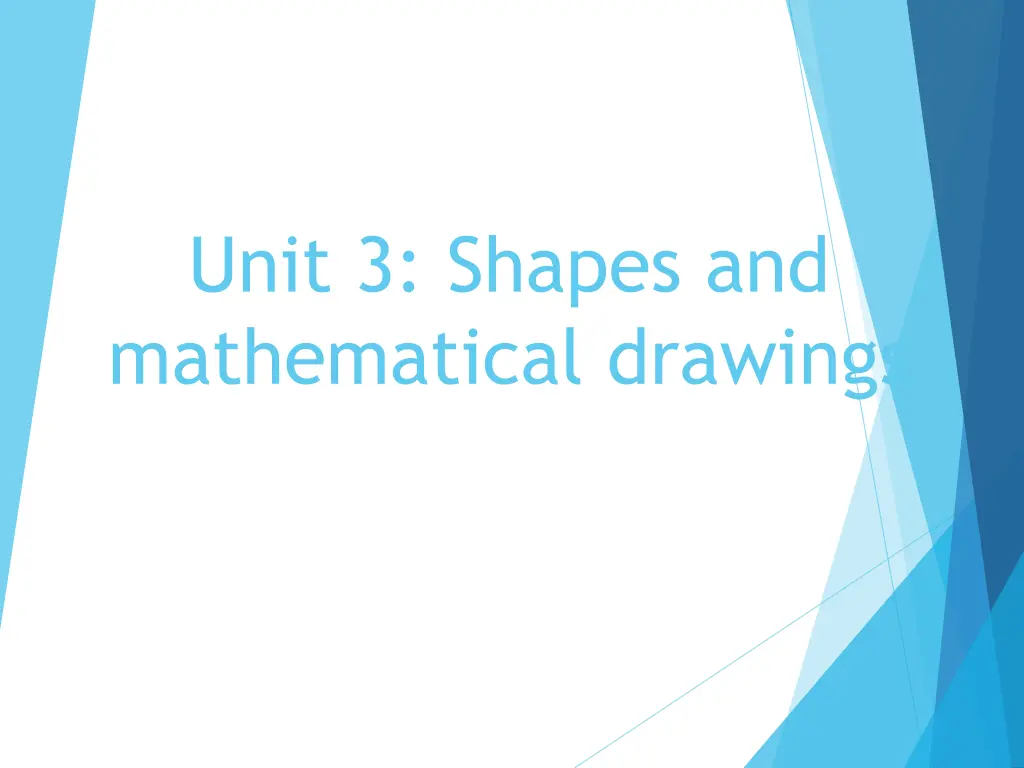
Understanding Polygons, Congruency, and Examples in Geometry
Explore the concepts of polygons, congruency, and examples in geometry. Learn about the properties of polygons, the importance of congruent shapes, and how to identify congruent figures through examples. Understand the difference between congruent and similar figures, and test your knowledge with practical examples.
Uploaded on | 0 Views
Download Presentation

Please find below an Image/Link to download the presentation.
The content on the website is provided AS IS for your information and personal use only. It may not be sold, licensed, or shared on other websites without obtaining consent from the author. If you encounter any issues during the download, it is possible that the publisher has removed the file from their server.
You are allowed to download the files provided on this website for personal or commercial use, subject to the condition that they are used lawfully. All files are the property of their respective owners.
The content on the website is provided AS IS for your information and personal use only. It may not be sold, licensed, or shared on other websites without obtaining consent from the author.
E N D
Presentation Transcript
Unit 3: Shapes and mathematical drawings
Polygons. In geometry, a polygon can be defined as a flat or plane, two- dimensional closed shape bounded with straight sides. It does not have curved sides. The sides of a polygon are also called its edges. The points where two sides meet are the vertices (or corners) of a polygon.
Simple polygons can then be split into even more categories! These categories include information about how many sides make up the polygon.
Congruency. The term congruent means exactly equal shape and size. This shape and size should remain equal, even when we flip, turn, or rotate the shapes. Examples of congruent figures. Two butterflies that have equal shape and size Two Lego bricks which represent equal shape and size
Congruent triangles A triangle has 3 sides and 3 angles, so for triangles to be congruent all 3 sides and angles should be congruent. We observe that: Side AC = EG, AB = EF and BC = FG, and A = E, B = F and C = G Therefore, ABC EFG. This symbol ( ) means congruent.
Difference between Congruent Figures and Similar Figures The significant difference between congruent figures and similar figures is that:
Examples. Example 1: Are the two angles ABC and XYZ congruent to each other? Solution: The measure of ABC = 40 and XYZ = 60 . As per the rule, two angles are congruent if the measures of both angles are equal to each other. The measure of ABC is not equal to the measure of XYZ. Therefore, ABC is not congruent with XYZ.
Example 2: Two triangles MNO and XYZ are congruent. Mention the corresponding sides and angles that will be equal. Given, MNO XYZ As per CPCT, all the three corresponding sides and angles of congruent triangles MNO and XYZ will be equal to each other. Therefore, MN = XY NO = YZ MO = XZ Also, M = X, N = Y and O = Z
Conclusion. We understand that identical shapes and sizes are called congruent in geometry. In congruent figures, the shape and size should remain equal when we flip, turn, or even rotate the shapes. And in congruent shape, two figures can be placed over each other.
To review watch the videos below: https://www.youtube.com/watch?v=86iU3fypTd4 https://www.youtube.com/watch?v=bo0aqufTJV4 Polygons. https://www.youtube.com/watch?v=DUGkQMLowXA P.44, Ex 3B Q1, 2, 3, 4, 9, 10
Parts of a circle Circle is a closed figure that has a curvilinear boundary. When we think of circles, the very first thing that comes to our mind is their round shape, for example, bangles, coins, rings, plates, pizzas, CDs, etc. The wheels of a car, buses, cycles, trucks, trains, and airplane are also round in shape.
To review watch the video below: https://www.youtube.com/watch?v=NTRhOU8JHtw P.46, Ex 3C Q1, 2, 3
Solid shapes. A solid shape is three-dimensional (3D). In 3D shapes, each side is called a face. Two faces meet an edge. Edges meet to form a vertex.
The difference between prisms and pyramids. Prisms Pyramids The prism on one side has two identical and parallel bases. the pyramid only consists of a single base. The faces or sides of the prism are always rectangular or a parallelogram pyramids are triangular in shape. The sides of a prism are perpendicular to its base. Pyramids sides are inclined at a certain angle.
To review watch the video below: https://www.youtube.com/watch?v=lEijwy3lrZ8 P.48, Ex 3D Q1, 2, 3, 4 , 8 , 9 , 10, 11
Mathematical drawings Draw perpendicular lines and parallel lines. We will need a protractor, a set square, a ruler a sharp pencil. Go to pages 54 and 55 from your book. To review watch the video below: https://www.youtube.com/watch?v=F1qG0l_FEmk P.55, Ex 3G Q1, 2
